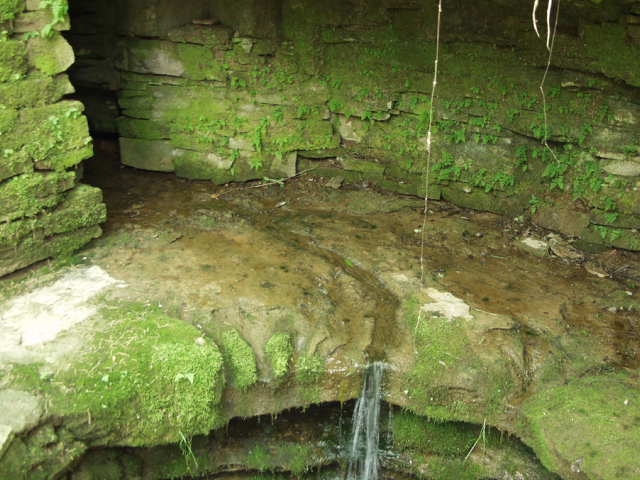Last updated: July 25, 2024
Lesson Plan
Discovering Earth’s Systems at Lincoln's Kentucky Homes

The Sinking Spring is a great place to see earth's systems at work!
National Park Service
- Grade Level:
- Upper Elementary: Third Grade through Fifth Grade
- Subject:
- Science
- Lesson Duration:
- 60 Minutes
- State Standards:
- Kentucky
Science
5-ESS2-1. Develop a model using an example to describe ways the geosphere, biosphere, hydrosphere, and/or atmosphere interact. - Thinking Skills:
- Remembering: Recalling or recognizing information ideas, and principles. Understanding: Understand the main idea of material heard, viewed, or read. Interpret or summarize the ideas in own words.
Essential Question
How do Earth’s systems work together in different environments?
Objective
Students will be able to examine the outdoor world to discover the different Earth systems and how they work together in an environment.
Background
Know the different Earth systems and how they work together including the Hydrosphere, Biosphere, Atmosphere, and Geosphere.
Preparation
Materials:
- Chart paper and markers - Have a paper for each system
- Computers for students to complete scavenger hunt
- Paper folded into 4 columns labeled Hydrosphere, Biosphere, Atmosphere, and Geosphere
- Plain paper, crayons, pencils, etc. for assessment
Lesson Hook/Preview
Introduction - Find a video about Earth’s major systems to introduce the topic of biosphere, hydrosphere, atmosphere, and geosphere. The video should discuss all of the systems and the components of each system.
Procedure
Discuss more in depth the different systems and what makes up each system. Provide definitions of each system to students. Then place students into groups of 3-5. Provide each group with a paper containing 4 columns. Each column should be labeled with a system. Each group will explore the park photo gallery to look for examples of materials from each system. Students will record their observations onto their paper.
Photo scavenger hunt for examples of materials from each of the systems.
https://www.nps.gov/media/photo/gallery.htm?pg=960293&id=89581447-1DD8-B71C-07126961A9B21862
https://www.nps.gov/media/photo/gallery.htm?pg=960293&id=26E8EA04-1DD8-B71C-07D049BD2B792325
https://www.nps.gov/media/photo/gallery.htm?pg=960293&id=2E7FD2C3-DC85-4D28-9F70-0B584426ED7D
https://www.nps.gov/media/photo/gallery.htm?pg=960293&id=C531AB5B-1DD8-B71C-07C2C65AE4529DEF
https://www.nps.gov/media/photo/gallery.htm?pg=960293&id=2ECFFE5C-1DD8-B71C-07290356E54F0E2B
https://www.nps.gov/media/photo/gallery.htm?pg=960293&id=E790D17B-1DD8-B71C-07A683D5714BA38F
After students explore the photo gallery from Lincoln’s Birthplace website, they can add one example from their group paper to each of the corresponding charts: hydrosphere, atmosphere, geosphere, or biosphere.
After reviewing the charts, look at ways the different systems work together in the environment. For example, the water (hydrosphere) flows over the rocks (geosphere) in the sinking spring and provides hydration for creatures (biosphere) living in or near the spring.
If students are taking a field trip to Lincoln’s Birthplace or Knob Creek, they can look for examples of the different systems on location and how they are working together.
Vocabulary
Hydrosphere- water (liquid or frozen)
Biosphere- living things
Atmosphere- air
Geosphere- rocks (solid or molten), sand, soil
Assessment Materials
DiagramStudents draw and label a diagram illustrating how 2-3 of the different systems work together in a particular environment.
Supports for Struggling Learners
Struggling learners can be placed into groups with other students that can do the writing on the paper or read materials to the student if needed.
Enrichment Activities
Excelling learners may create an infographic or slide show illustrating Earth’s systems working together.
Related Lessons or Education Materials
Meets Kentucky 5th grade science standards. This lesson was created by Kentucky teachers as a part of the History and Science Explore Project.
